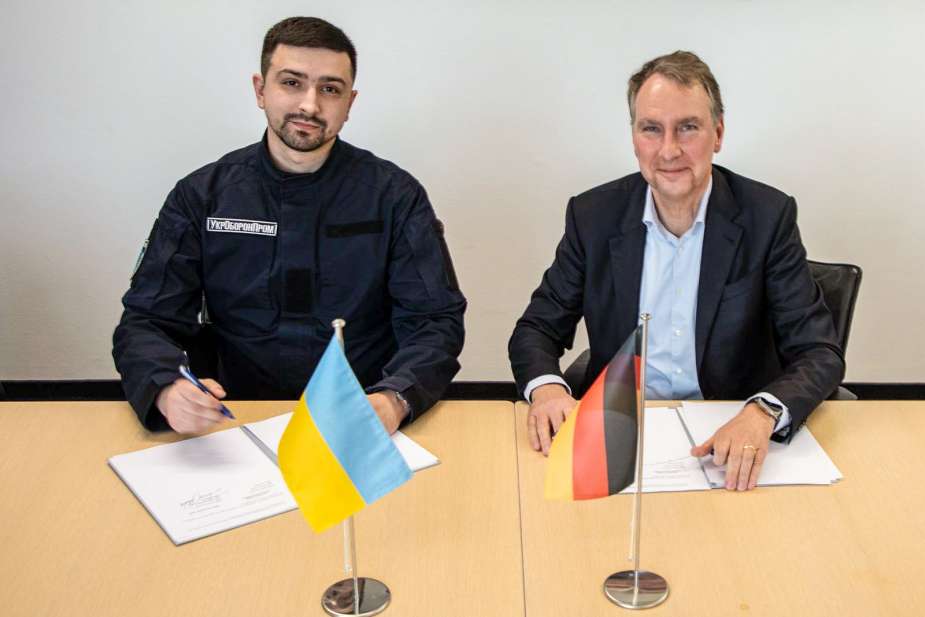Breaking news
Ukraine establishes partnership with MBDA Germany to develop anti-drone solutions.
Ukraine's national defense company, Ukroboronprom, has formalized a partnership with MBDA Germany. This agreement paves the way for collaborative studies on air defense strategies and technologies, focusing on combating drone threats. The collaboration is expected to enhance research, development, manufacturing, and financial investment in Ukraine's defense capabilities.
Follow Army Recognition on Google News at this link

Ukraine's national defense company, Ukroboronprom, has formalized a partnership with MBDA Germany. (Picture source: Ukroboronprom)
Herman Smetanin from Ukroboronprom highlighted the importance of this partnership, stating it not only strengthens Ukraine's current military capabilities but also fosters growth in the defense sector and promotes integration with NATO's defense mechanisms.
The emergence of drones in the Ukraine conflict marks a turning point in how wars are conducted in the modern era. Drones, or unmanned aerial systems (UAS), have become crucial for various reasons, from surveillance and reconnaissance to direct offensive purposes. Here are some key points explaining this emergence and the importance of developing solutions to counter this threat.
Drones offer an unprecedented ability to monitor and recognize enemy positions with minimal risk to operators. This enables real-time information gathering, crucial for strategic and tactical planning. In Ukraine, this capability has allowed armed forces to adjust their positions, plan attacks with increased precision, and better understand enemy movements.
Armed drones have been used to carry out precise strikes on specific targets, often with smaller but very accurate munitions. This ability to strike accurately minimizes collateral damage and allows for reaching otherwise difficult-to-access targets, such as bunkers or armored vehicles.
Drones are relatively cheaper to produce and operate than traditional combat aircraft. This makes them accessible to regular armies and non-state groups, thereby increasing the number of actors capable of conducting offensive operations or surveillance.
In the Ukrainian context, drones have enabled asymmetric warfare, where smaller or less-equipped forces can inflict significant damage on a larger or better-equipped adversary. This has leveled the playing field in some respects, allowing Ukraine to effectively defend its territory against a much larger invasion.
With the increased use of drones for surveillance and attacks, it has become imperative to develop effective countermeasure systems. C-UAS solutions include technologies to detect, identify, track, and neutralize enemy drones. This can range from jammers that disrupt communication between the drone and its operator, to laser weapons capable of shooting down drones, to capture systems that allow for taking control of enemy drones.
The signing of the memorandum of understanding between Ukroboronprom and MBDA Germany underscores the importance of developing such air defense capabilities, especially to counter unmanned aerial systems. International cooperation in this area is crucial to stay at the forefront of technology and ensure that defense forces are equipped to face evolving threats such as the hostile use of drones.
As US military support hangs in the balance, with potential discontinuation if Congress does not approve the proposed $60 billion funding, European nations may have to shoulder more responsibility due to their limited defense production capabilities.



















